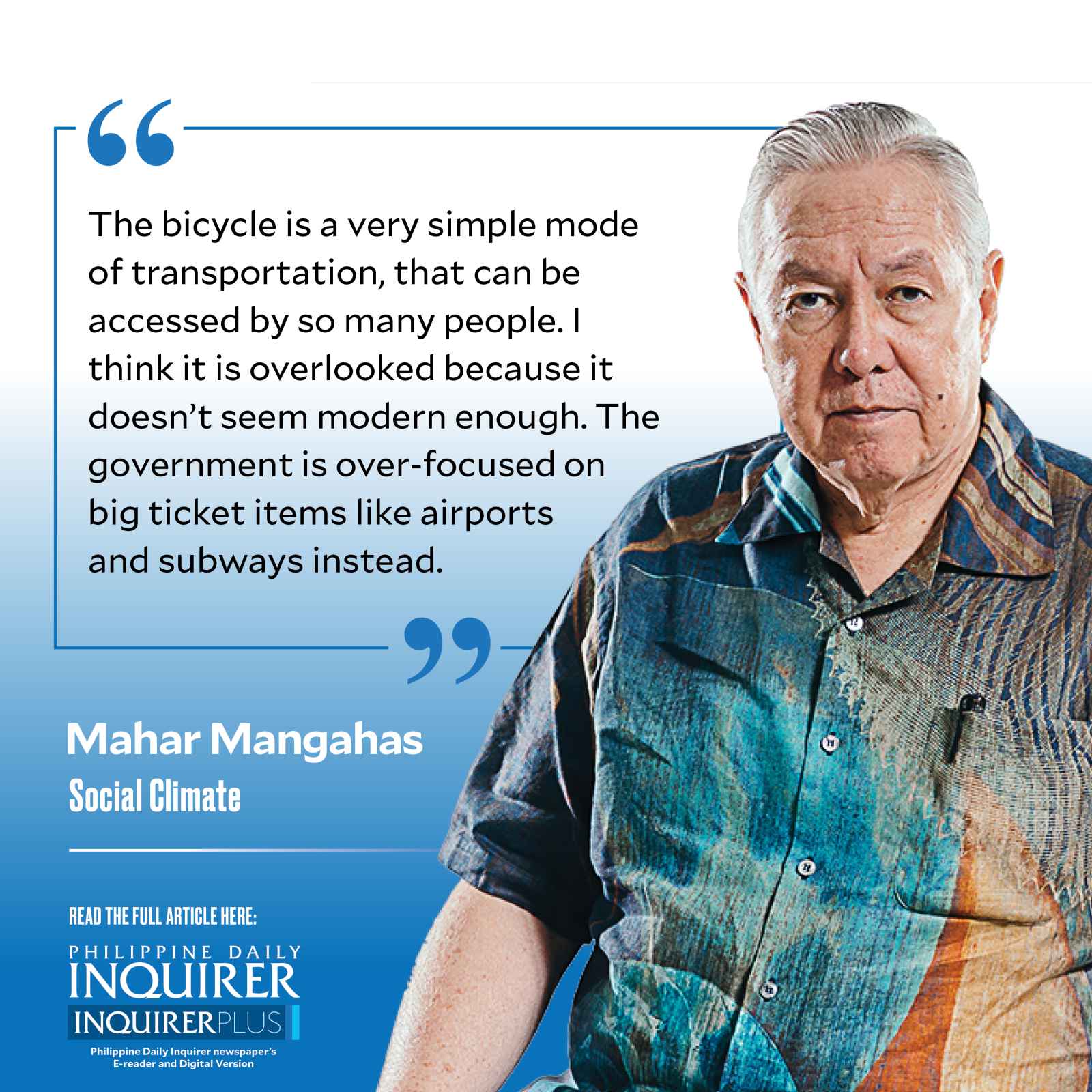
Several days ago, I got back from the Netherlands, where, per Wikipedia, “cycling is the second most common mode of transport … with 36% of Dutch people listing the bicycle as their most frequent way of getting around on a typical day, as opposed to the car (45%) and public transport (11%).” Amsterdam itself has so many bikes that 10,000 of them are fished out of its canals each year, according to the canal boat captain who toured us around.
By sheer serendipity, this week’s Social Weather Stations (SWS) report cites the same number, 36 percent, as the March 2023 proportion of Philippine households with at least one member who cycles for any activity (“Social Weather Report: Cycling households rise from 29% in 2022 to 36% in 2023,” www.sws.org.ph, 8/31/23). (For this much simpler definition, I imagine the Dutch proportion would be 90 percent!)
The proportion of such “cycling households” is accelerating: It rose by 7 points from April 2022, and is now up by 12 points from the 24 percent in May 2021. Application of the survey percentages to official projections of the number of households puts the estimated number of cycling households at 10.0M (million) in 2023, versus 7.3M in 2022, and 6.2M in 2021.
The cycling report was done by Christian Michael “Mic” C. Entoma, a sociologist, who is a 23-year veteran with SWS, and a cyclist himself. His nickname rhymes with “bike,” like the “mic” in “microphone.” Mic’s bike-commute between home and office takes him 45 minutes for 10 kilometers.
SWS encourages its staff members to analyze their preferred topics, using the available data; they can also suggest extra questions for getting new data, where the budget allows. After all, since we own and operate our own survey vehicle, we should be allowed to be passengers too, when space allows. (Mic’s main concern is his safety while biking on the road, so I look forward to his suggestions on how to measure the hazards of biking in future surveys; in other words, let us try to expose both the downsides and the upsides.)
Basic bicycling statistics. A few well-directed survey questions have elicited much new data. For one thing, we now know that about two-thirds of bikers use household-owned bikes, while one-third use borrowed ones. A few have bikes, but don’t use them. (Is there a rental market for bikes?)
The ratio of bike-owning households to four-wheel motor-vehicle-owning households has zoomed to 4:1 now, compared to 2:1 three years ago.
Actually, the most common transport vehicle owned by households at present is the motorcycle. Motorcycling is another story altogether; on this score, I think we’re entering a stage that Malaysia, Thailand, and Vietnam already passed through.
Usage of bikes has grown for both recreational and essential activities. The households using cycles gave multiple reasons for this: to save on transport fare, to improve health, to save travel time, to lose weight, for play, to meet people, for livelihood, etc.
The bike-using households were asked which members were the cyclists, and for each cyclist’s sex, age, and relation to the household head. This led to Mic’s estimates of 17.4M persons as the number of cyclists in 2023, versus 11.2M persons in 2022. Most of the cyclists are the household head’s children; next are the head and his/her spouse.
Though men still dominate in number, cycling is growing much faster among women, so much so that the male-female ratio fell from 4:1 to 3:1 between 2022 and 2023. Cycling is also growing very quickly among the youth, with cyclists of age 17 and below now as many as those of age 18-34.
Modernity versus basic adequacy. Every survey for reporting the Social Weather includes a checklist of home assets, especially “modern” ones. The data series shows that there is, in general, rising access to cable TV, home computers, internet, and their accompanying gadgets. Home landlines are rapidly vanishing, for example, in favor of mobile phones. Yet there are still significant gaps in the people’s access to the more basic utilities, such as electricity, piped water, and sanitation.
The bicycle is a very simple mode of transportation, that can be accessed by so many people. I think it is overlooked because it doesn’t seem modern enough. The government is over-focused on big ticket items like airports and subways instead. I suspect that it envies Indonesia for being first in Southeast Asia to have a bullet train.
Achieving “sustainable cities and communities” (United Nations Sustainable Development Goal No. 11) requires adequate personal access to alternative vehicles, a good system of public transport, and a secure physical environment. Providing regular data on personal mobility over space is the researchers’ small contribution to learning how to do it efficiently.
—————-
Contact: mahar.mangahas@sws.org.ph.

